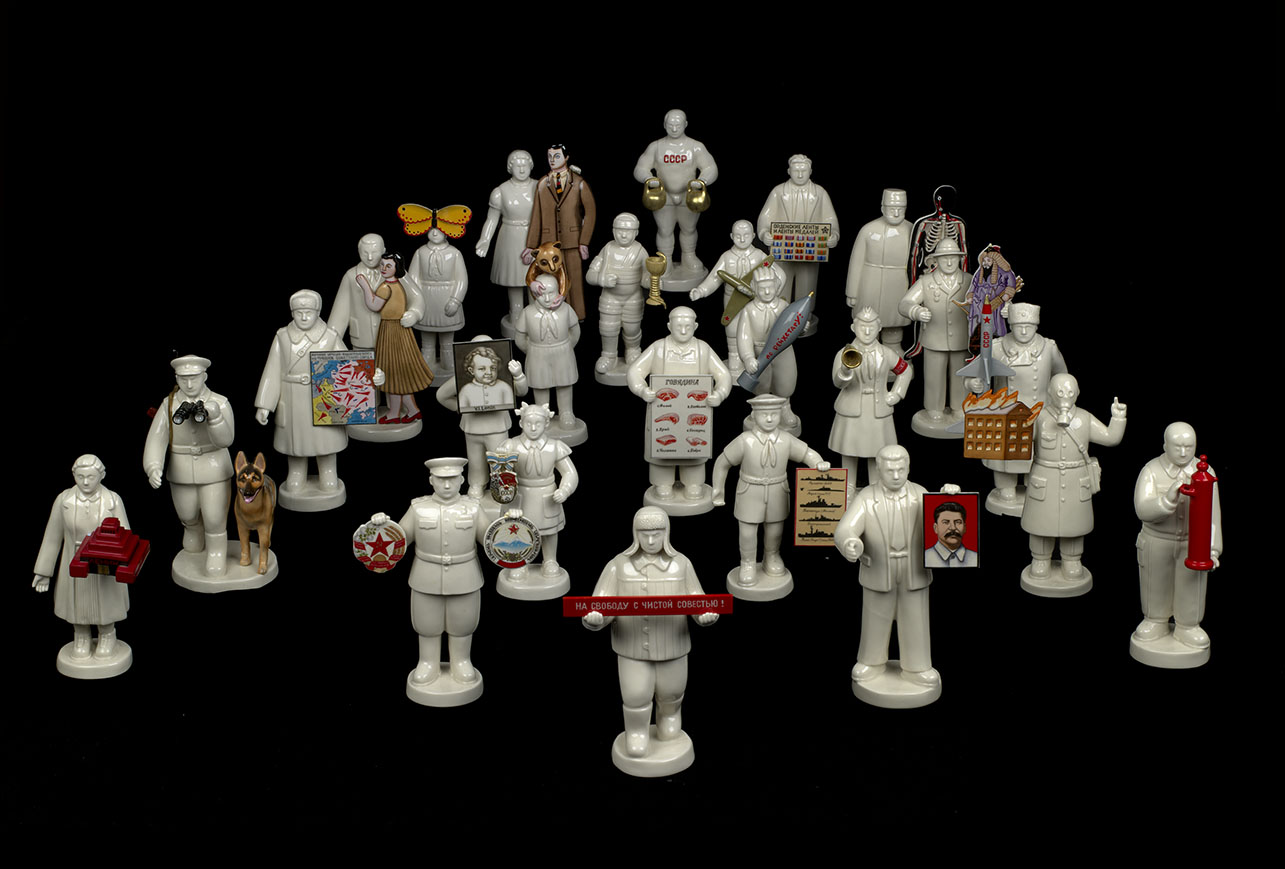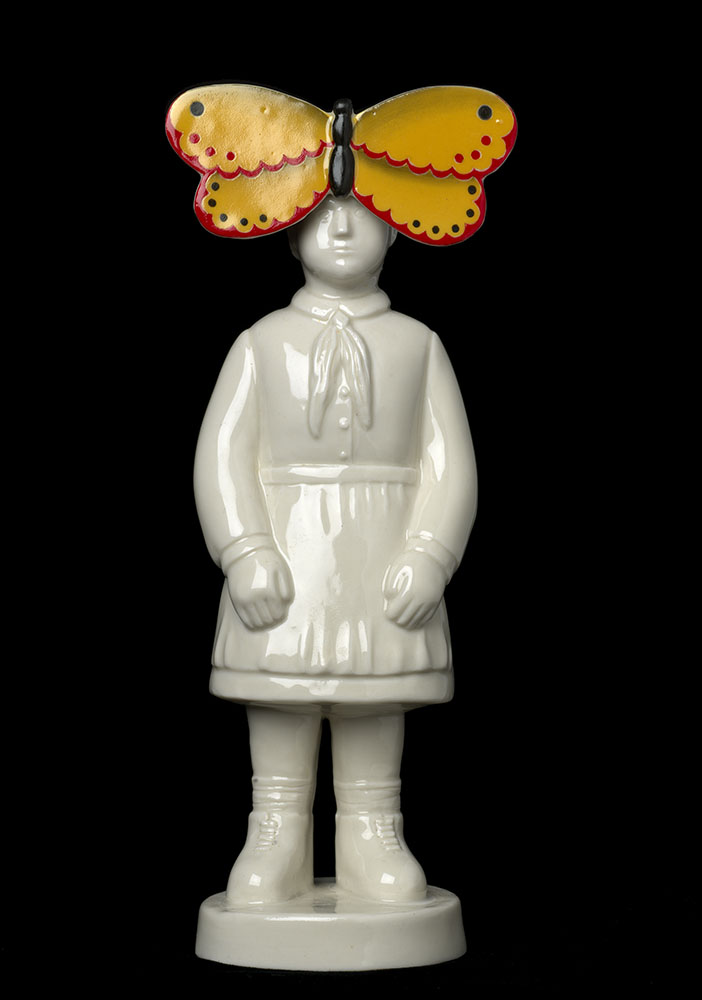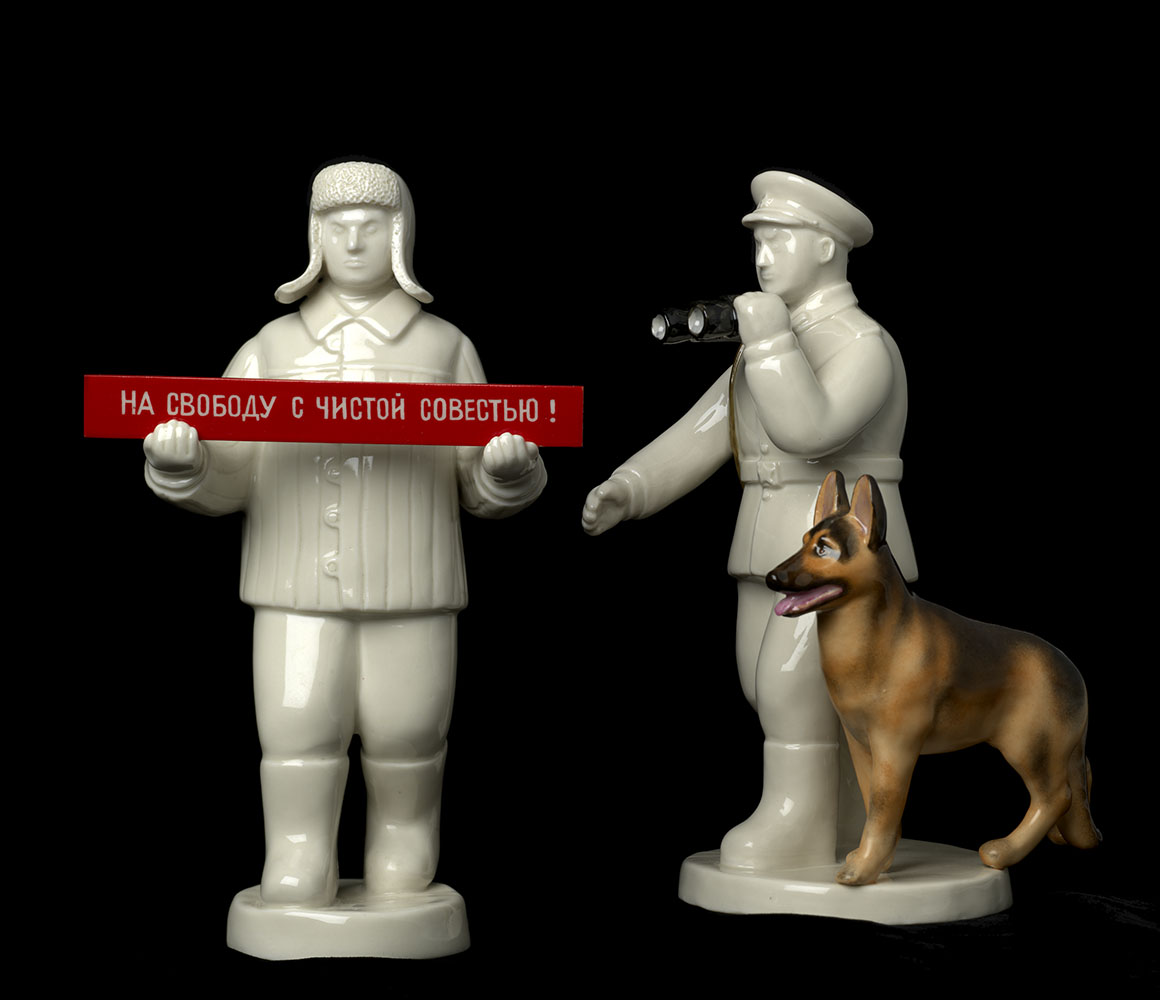MacDougall Auctions 12-18 June 2008
12 June 2008

* § 438. BRUSKIN, GRISHA B. 1945
Life is Everywhere 25 figurines signed and dated 1999; also numbered '6/8' and with a factory stamp, 'Kuznetsovsky Porcelain Manufactory, 1999'.
25 porcelain figurines, the tallest 22.5 cm. high and the shortest 17.5 cm. high.
100,000-200,000
Provenance: Acquired directly from the artist.
Private Collection.
Life is Everywhere is permanently exhibited in the State Russian Museum, St. Petersburg as part of a museum collection.
Exhibited: Grisha Bruskin, Life is Everywhere, State Pushkin Museum of Fine Art, Moscow, 2001.
Grisha Bruskin, Life Is Everywhere, Ludwig Museum, State Russian Museum, St. Petersburg, 2001.
Grisha Bruskin. Fragmente einer endlossen Sammlung, Museum Judengasse, Frankfurt am Main, 2003.
Remembrance, Yeshiva University Museum, New York, 2003-2004.
Chanel, L’Art comme univers, State Pushkin Museum of Fine Art, Moscow, 2007.
The History of the USSR, MacDougall's, London, April-May 2008.
Literature: Grisha Bruskin, “Life is Everywhere”. In Grisha Bruskin, Life is Everywhere. Exhibition catalogue. Palace Edition,
St. Petersburg, 2001, pp. 200–215 illustrated.
Natalia Sipovskaya, “The ABC of Porcelain”. In Grisha Bruskin, Life is Everywhere, Palace Edition, St. Petersburg, 2001, p. 153–161.
Yevgeny Barabanov, “The Archeologist’s Collections”. In Grisha Bruskin, Life is Everywhere, Palace Edition, St. Petersburg, 2001, p. 61–113.
Alexander Borovsky, “Towards Bruskin”. In Grisha Bruskin, Life is Everywhere, Palace Edition, St. Petersburg, 2001, p. 125–149.
Grisha Bruskin, Fragmente einer endlosen Sammlung. Hrsg. von Georg Heuberger. Exhibition catalogue. Frankfurt am Main: Jüdisches
Museum, 2003, p. 46–55 illustrated.
Remembrance, Exhibition catalogue, Yeshiva University Museum, New York, 2004, p. 23 illustrated.
Chanel. L’Art comme universe, Exhibition catalogue. State Pushkin Museum, Moscow, 2007, p. 280 illustrated.
For more information see printed catalogue.
GRIGORY BRUSKIN ABOUT HIS WORKS: …There is a
tradition that has existed in the history of Russian porcelain of creating figures of people representing various strata of society, of
different nationalities and a variety of professions, a unique dictionary
of the population of Russia, supplemented immediately
after the revolution by Soviet images. Gradually the tradition was
lost. A time rupture was formed, a vacuum. I found it interesting
to fill this vacuum by creating my own new collection of Russian
archetypes, thus adding to the old collection.
My collection consists of 25 porcelain sculptures. The 20–22 cm
size is the average for Russian porcelain figures. Each one represents
an archetype of the Soviet ideological myth: the pioneer, the
worker, the doctor, the patient, the prisoner, the serviceman and
so on. All the characters are looking ahead. They all have the
same facial expression of alarmed astonishment. Just as Lot’s wife
in the Bible, broke the command not to look back and in doing so
was immediately turned into a pillar of salt, so have my heroes
looked too far into the forbidden distance stretching before them
and been turned into porcelain, ending up as subjects for collectors.
Each figure has an accessory which is coloured and more
real than the person himself. The accessory labels the personality
in question, and gives them their name (…but give me a name,
give me a name…).
The collection has been selected carefully and with love. Working
on it, I became like an entomologist who catches butterflies and
drugs them with ether. Then he spreads out their tiny wings and
skewers them on pins. After this he arranges his treasures beautifully
in boxes and attaches written labels to them which describe
and classify them. When we have a collection like this we receive
the information that tells us what butterflies are. We see that they
have a body, wings and feelers, little eyes and delicate legs. We discover
that butterflies come in various sizes and various colours,
depending on what they feed on and where they live, and whether
they lead a diurnal or nocturnal way of life. In the end we derive
aesthetic pleasure from examining them, because butterflies are
unusually beautiful.
At one time, while living in communist Russia, I began to assemble
collections like this (the painting Fundamental lexicon and the
sculpture installation Birth of a hero). It seemed to me that communism
in Russia was unshakeable, that the army was incredibly
strong and the KGB was everywhere, and that Soviet power, like
the power of the Egyptian pharaohs, would last for several thousand
years. I felt I wanted to peer into the mythological space
which I inhabited, but from the sidelines, to take the standpoint of
a scholar who has unexpectedly discovered a hitherto unknown
African tribe. I liked the versatile position of the author where on
the one hand I was an impartial researcher, while on the other I
was myself a representative of the African tribe being studied.
My idea was to send an item of news to the human being of the
future; to offer him a view of my art as we might look at ancient
Egyptian art at the Louvre or the Hermitage. But the item of
news I sent had to be false, a deception, because art is a real artefact
of the communist myth, this myth-creating art of socialist
realism. When he had fathomed this secret, the Champollion of
the future would gain important knowledge not only of this myth
but also of things beyond it, all the while admiring the wisdom of
the cipherer.
However, history had prepared a surprise for us: the history magician
waved his wand and the communist pyramid tumbled down
in Russia in the twinkling of an eye. The circle was closed. I, in
fact, turned out to be that very human being of the future, that is
to say I have received the news which I myself sent out. Now,
when creating a group of sculptures in porcelain, I have, as it
were, taken on the role of ‘cultural archaeologist’, putting together
a collection for a museum. This is why quality and the magic of
the material – porcelain – were so important to me. I myself in
this case become like a guide, a strange kind of Virgil, offering
travellers a look at the world of a drowned Atlantis – an Atlantis
of which I was once a citizen.



Notes on symbols:
* Indicates 5% Import Duty Charge applies.
Ω Indicates 20% Import Duty Charge applies.
§ Indicates Artist's Resale Right applies.
† Indicates Standard VAT scheme applies, and the rate of 20% VAT will be charged on both hammer price and premium.